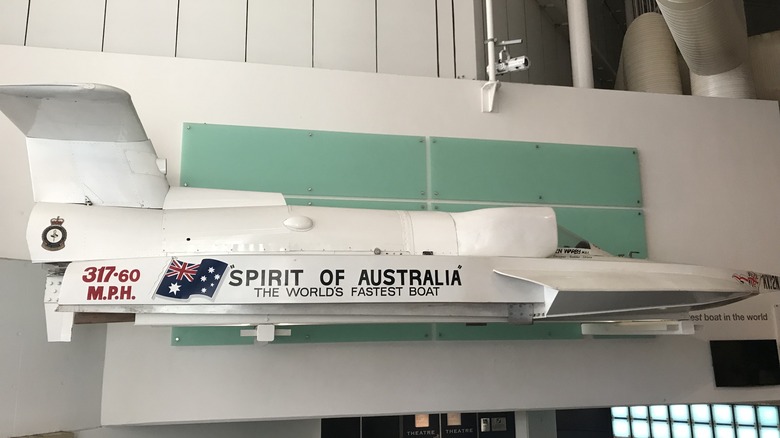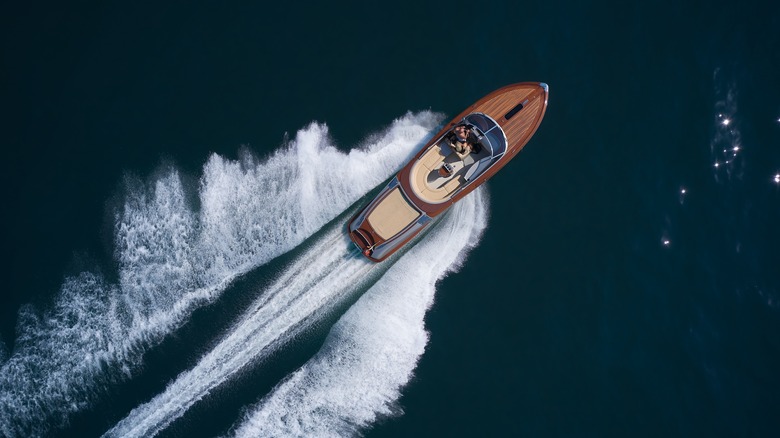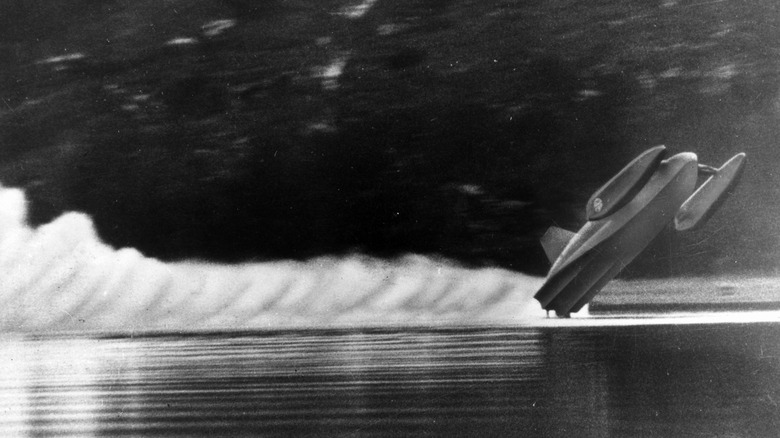How Fast Can Speed Boats Go? (And What Is The Current Record?)
A century ago, boats were the primary mode of long-haul international travel. Today, airplanes have taken center stage as they are safe, inexpensive, and way faster than an ocean liner thanks to their powerful jet engines. The average speed of a cruise ship is only around 20 knots or 23 mph. However, that's not even close to the fastest speedboats to take to the waters. In 1978, Ken Warby's Spirit of Australia became the fastest speed boat to hit the waters at a maximum speed of 328 mph, although the official record stands at 317 mph (his average speed over two test runs). Remarkably, Warby's record has remained unbeaten for nearly five decades despite advancements in maritime technology, and there's a solid reason why.
Warby reached such blazing fast speeds by equipping Spirit of Australia with jet engines, which are among the engines that changed aviation forever. However, speeding over water is way more dangerous than going fast in the air or on land. The physics involved in keeping boats afloat and moving quickly on water can lead to fatal accidents, especially at such high speeds. While there have been numerous attempts at reaching record speeds on water, many of the pursuits have ended tragically. Let's look at how fast can a speed boat can go safely and the history of the fastest speed boats to hit the waters.
How speed and pleasure boats compare
Traveling at high speeds on water is great fun and a serious adrenaline boost. Speed boats, tailor-made to cruise at high speeds, can safely go up to 90 mph without breaking a sweat. While 90 mph sounds slow when compared to the average car, these speeds can feel much faster on water. As mentioned earlier, going much beyond these speeds can and has resulted in fatal accidents due to the flipping of boats.
Deck boats are another type of fast boat with an average speed of 30 knots (34 mph), and can go up to a maximum speed of about 57 mph. While pontoon boats may seem slow, they can also reach respectable speeds over water. Most pontoon boats can get up to around 41 mph, although the record is 99 knots (114 mph).
Yachts can also travel fast, with maximum speeds of up to about 66 mph. However, they are best enjoyed when traveling at leisurely speeds, closer to their average of around 17 mph. Due to their balance, center console boats are also known for their speed, and the record for such a boat is 90 knots (104 mph).
Fast speedboats have taken many lives in the past
Since 1930, a remarkable seven out of the thirteen people who have attempted to set new water speed records have lost their lives in accidents. An early casualty was the aptly named British pilot Sir Henry Seagrave, who held the land speed record at the time of his death. In 1930, he tried to be the first person to reach 100 mph on water and take that speed record back from American Garfield Wood. In his boat, the Miss England II — which was powered by two Rolls-Royce engines — Seagrave broke 100 mph on his first run and set a new world record on his second. Unfortunately the boat flipped during a third attempt, killing Sir Henry and his chief engineer Victor Halliwell. The following decades saw valiant attempts from John Cobb, Mario Vergra, and especially Donald Campbell, who was arguably the most successful of the bunch. He was the first to crest 300 mph in his Bluebird K7 in 1967, but died in a crash before he could complete the run and make his time official.
A decade later, Warby — inspired by Campbell — first attempted to reach 300 mph with his home-built Spirit of Australia. He came close at 288 mph, and returned the next year with a better version of his boat and successfully topped 300 mph. Warby was the rare success story, and the string of casualties continued with the 1989 death of Craig Arfons. Interestingly, Arfons reached 350 mph on the water but died when his boat lost control. Despite the obvious peril, the quest for speed on the water continues. Warby began building the Spirit of Australia II before he died in 2023 of an illness, and his son David is carrying on with that work.


